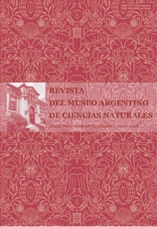Ichthyofauna of two streams in the high basin of the Samborombón River, Buenos Aires province, Argentina.
Resumen
The ichthyofauna of the Manantiales (35°0234S; 58°1937W) and El Portugués (35°0416S;
58°2609W) streams, both of them pertaining to the high basin of the Samborombón River, in the Province of
Buenos Aires, Argentina, was studied. Abundance, specific richness, diversity and temporary distribution were
considered throughout an annual cycle. The specific diversity between both streams was compared and the physical
and chemical parameters of the environment analizad. In total 8595 specimens were captured, pertaining to 20
species, 11 families and 5 orders. The order Characiformes was the most widely represented with 10 species and a
relative abundance of 50%, followed by the order Siluriformes with 6 species and a relative abundance of 30%. The
specific richness in the Manantiales was of 20 species, the annual diversity index was 1.42 and the uniformity
index was 0.58. The specific richness in El Portugués was of 17 species, the annual diversity index was 1.51 and the
uniformity index was 0.64. Differences in the composition of dominant species were observed. The diversity values
are similar to that recorded in Pampasia and southern Brazil streams.
58°2609W) streams, both of them pertaining to the high basin of the Samborombón River, in the Province of
Buenos Aires, Argentina, was studied. Abundance, specific richness, diversity and temporary distribution were
considered throughout an annual cycle. The specific diversity between both streams was compared and the physical
and chemical parameters of the environment analizad. In total 8595 specimens were captured, pertaining to 20
species, 11 families and 5 orders. The order Characiformes was the most widely represented with 10 species and a
relative abundance of 50%, followed by the order Siluriformes with 6 species and a relative abundance of 30%. The
specific richness in the Manantiales was of 20 species, the annual diversity index was 1.42 and the uniformity
index was 0.58. The specific richness in El Portugués was of 17 species, the annual diversity index was 1.51 and the
uniformity index was 0.64. Differences in the composition of dominant species were observed. The diversity values
are similar to that recorded in Pampasia and southern Brazil streams.
Texto completo:
PDFEnlaces refback
- No hay ningún enlace refback.

This work is licensed under a Creative Commons Attribution 3.0 License.

